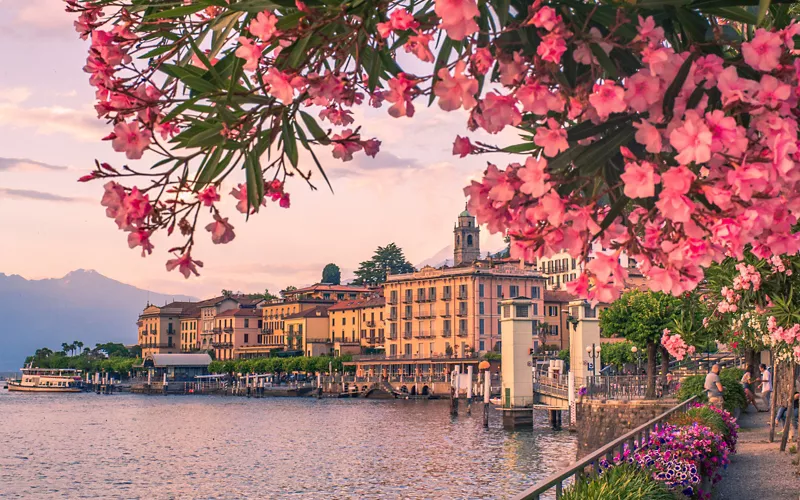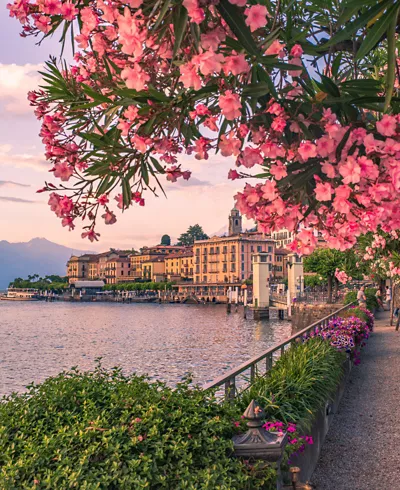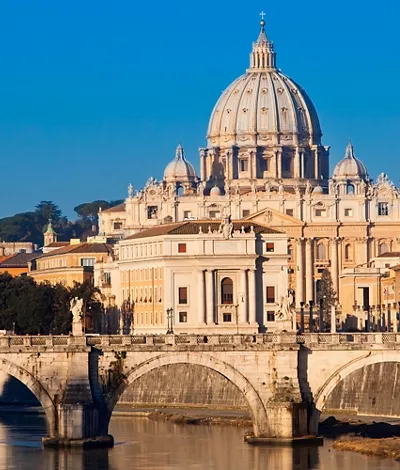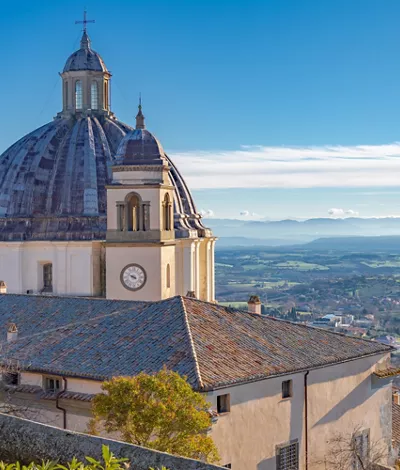St Peter’s Basilica
The heart of the Catholic world, St. Peter's Basilica is the most majestic basilica in Christianity, built on the site where St. Peter was buried. Covering an area of 22,067 square metres, it is 218 metres long (including the portico) and 136 metres high from the ground to the cross on the dome.
The ancient imperial basilica was built by Constantine on the burial site of the apostle Peter. Like many other early Christian churches, it was left in a state of decay until the 15th century when, first by the decision of Nicholas V and then under the pontificate of Julius II, reconstruction work began in 1506, following a design by Bramante. Following Bramante's death, other famous architects followed, including Michelangelo, commissioned at the age of 72 in 1547, who simplified Bramante's original design and created what was to be his absolute architectural masterpiece: the dome. Unfortunately, Michelangelo died before seeing it finished, and it was left to Giacomo della Porta and Domenico Fontana to complete it.
The façade of the basilica, made by Carlo Maderno in 1614, can now be seen in its original colours after careful restoration in 1999. Preceded by a three-tiered staircase, it is divided by eight columns and pillars that support a trabeation crowned by a balustrade. The central balcony above the portico is the Loggia of Blessings, where the pope blesses the city and the election of the new pontiff is announced. Michelangelo's dome is an immense double-shell structure covered in mosaics. Five bronze doors serve as the entrance to the basilica: the last on the right is the Holy Door, which is only opened in Jubilee years, the middle door has magnificent panels taken from the Constantinian basilica, created by Filarete (1439-45). The doors in the other entrances are modern; the last one on the left (the Door of Death) is by Giacomo Manzù.
In the central nave, near the door, is the disc where Charlemagne and the other emperors knelt to be crowned by the pope. The bronze statue of St Peter, probably from the 13th century, ushers in the grandiose area below the luminous Michelangelo dome, supported by four pillars, at the base of which stand the statues commissioned by Urban VIII. Above, four Bernini balconies hold precious relics of the Church. An ideal view of the interior and the perception of space and proportions can be captured well from here, near the papal altar. In the middle, above the altar, rises the bronze Baldachin by Bernini (1624-33), who, according to popular opinion, melted down the Pantheon bronzes to make it. Francesco Borromini also collaborated on the architectural features of the majestic structure (29 metres in height). Barberini's bees rest among the tendrils of the twisted columns, while above, four angels hold festoons and four volutes are joined to support a golden globe surmounted by the cross.
Behind the altar, in the apse, the background is occupied by the Chair of St Peter, by Bernini (1656-65), which is a large gilded bronze throne supported by four 5 m tall statues of the church fathers. To the right of the throne is the monument of Urban VIII by Bernini (1627-47) and to the left, that of Paul III by Guglielmo della Porta (1551-75).
In the passage between the third and second chapels in the left nave, stands the gilded bronze tomb of Innocent VIII by Pollaiolo (1498), which was moved from the ancient basilica in 1621. In the left transept, in the Madonna delle Colonne Chapel, a marble altarpiece by Alessandro Algardi (The Meeting of Leo the Great and Attila, 1646–50) stands above the altar with the pope's relics. In the next arch is the funeral monument of Alexander VII (1672–78), a lavish work by Bernini in polychrome marble. Halfway down the nave, the Presentazione Chapel houses two of the basilica's most recent works: monuments to John XXIII by Emilio Greco (right) and to Benedict XV by Pietro Canonica (left). Under the next arch are monuments to the Stuarts, designed by Filippo Barigioni, and a somewhat erotic memorial stone by Canova in the form of a stele (1817–19). The lid of an ancient porphyry sarcophagus, possibly belonging to tomb of Hadrian and later to that of Otto II, forms the basin of the baptistery.
In the first chapel of the right nave we find the beautiful and touching marble group of Michelangelo's Pietà, which has continued to impress for centuries and is the only work that bears Michelangelo's signature (you will find it on the band across the Virgin's chest). It is a youthful work by Michelangelo (1498-99): he was only 23 when he created it, but already in full possession of his technical virtuosity and expressive maturity. On the pillar immediately after the Pietà is the funeral monument to Christina of Sweden by Carlo Fontana. Continuing on, you arrive at the chapel of San Sebastiano, which houses the tomb of Pope John Paul II and, then, to the opulent baroque Blessed Sacrament Chapel with works by Bernini, Borromini and Pietro da Cortona. Beyond the chapel, near the imposing monument of Gregory XIII, Camillo Rusconi, you will find the tomb of Gregory XIV. In the right transept, the monument to Clement XIII (1784–92), with the statue of the pope kneeling in prayer, is one of the most accomplished pieces of work by Antonio Canova.































